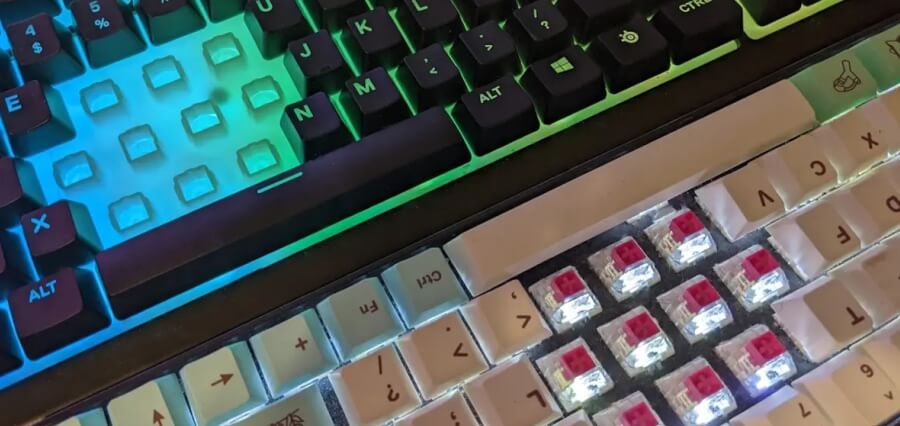Discover Exactly How a Membrane Switch Enhances Toughness and Functionality in Instruments
Understanding the Functionality of Membrane Changes for Interface Gadget
The capability of membrane changes represents a considerable development in customer interface style, incorporating efficiency with visual flexibility. As markets progressively focus on individual experience, recognizing the nuances of membrane layer switch modern technology comes to be essential.
What Are Membrane Buttons?
Membrane buttons are cutting-edge interface tools that help with customer interaction with electronic equipment. These functional components include several layers, including a graphic overlay, spacer, and a printed circuit layer. The design permits a seamless assimilation into different digital gadgets, enhancing both the visual and useful aspects of interface.
Membrane switches are commonly used in a large range of applications, from household appliances to industrial machinery and medical devices. Their building normally features a slim account, making them an ideal option for small designs. The responsive comments given by these switches can be crafted to satisfy particular individual choices, making sure efficient communication between the customer and the device.
Resilience is one more considerable advantage of membrane layer buttons, as they are resistant to dust, moisture, and chemicals, which improves their life expectancy popular settings. Additionally, these buttons can be personalized in regards to shape, dimension, and graphic style, permitting branding and user-specific functions. On the whole, membrane switches stand for a functional remedy for improving user experience in digital gadgets, combining functionality with aesthetic allure in an effective way.
Just How Membrane Switches Job
Operating on a simple concept, membrane layer changes make use of a split building to register customer input efficiently. Each button consists of numerous layers, consisting of a printed circuit layer, a spacer layer, and a leading visuals layer, which are developed to collaborate flawlessly. When a customer presses the top layer, it presses the spacer layer, bringing the conductive components of the circuit layer into call with each other.
This get in touch with creates a closed circuit, signifying the tool to execute a details feature. The style enables numerous configurations, consisting of responsive responses, which can improve the customer experience by giving a physical experience upon activation. The products utilized in membrane switches usually consist of adaptable substrates, such as polyester or polycarbonate, which make sure toughness and resilience versus damage.

Secret Benefits of Membrane Switches

Another considerable benefit is their density. Membrane layer buttons are thin and light-weight, which allows manufacturers to save space in their devices without giving up functionality. This feature is especially beneficial in applications where weight and quantity are vital considerations.
Additionally, membrane layer switches are resistant to dust, dampness, and chemicals, boosting their sturdiness. This durability extends their life expectancy and decreases the need for frequent substitutes, resulting in price savings gradually.
Furthermore, the responsive comments supplied by membrane layer buttons can be optimized to boost customer interaction. They can consist of features such as increased switches or audible clicks, improving use and user experience.
Applications Across Industries
Customer user interface gadgets using membrane buttons are prevalent in a broad array of markets, showcasing their versatility and capability. Membrane Switch. In the clinical sector, membrane layer switches are important to tools such as analysis equipment and patient surveillance systems, where their resilience and simplicity of cleansing are vital for preserving health criteria. Similarly, in the auto industry, these switches are used in dashboard controls and infotainment systems, providing a smooth and modern-day user interface for users.
Furthermore, the consumer electronics sector take advantage of membrane buttons in appliances and portable tools, where small design and user-friendly user interfaces improve browse this site customer experience. Industrial applications additionally take advantage of membrane switches over for control board in equipment and automation systems, highlighting their effectiveness and resistance see page to rough settings.
In the aerospace and protection sectors, membrane buttons are used in cockpit controls and tools, where dependability and performance under extreme conditions are vital. In addition, the video gaming market progressively incorporates membrane layer buttons in controllers and arcade makers, adding to an engaging user experience. Generally, the versatility of membrane changes allows their widespread use throughout numerous sectors, highlighting their significance in modern user interface style.
Future Patterns in Membrane Layer Switch Over Technology

Additionally, using advanced products, such as polycarbonate and polyester movies, is expected to climb, supplying improved toughness and resistance to ecological stress factors. These products add to the total longevity of membrane switches, making them appropriate for harsher industrial applications.
Moreover, the unification of wise technology, including IoT connectivity, will certainly enable membrane buttons to interact with other devices and systems, promoting an extra interactive user experience. This trend lines up with the growing need for wise tools throughout various sectors, from medical care to consumer electronics.
Lastly, personalization alternatives are expected to increase, allowing producers to produce bespoke remedies customized to certain customer requirements and preferences. These advancements will certainly position membrane layer buttons as vital parts in the development of interface modern technology.
Conclusion
In verdict, link membrane layer switches stand for a crucial innovation in individual interface modern technology, using a reliable and functional service for diverse electronic applications. As improvements in material science and touch picking up innovations proceed, the functionality and applicability of membrane switches are expected to increase, reinforcing their importance in modern electronic gadgets.